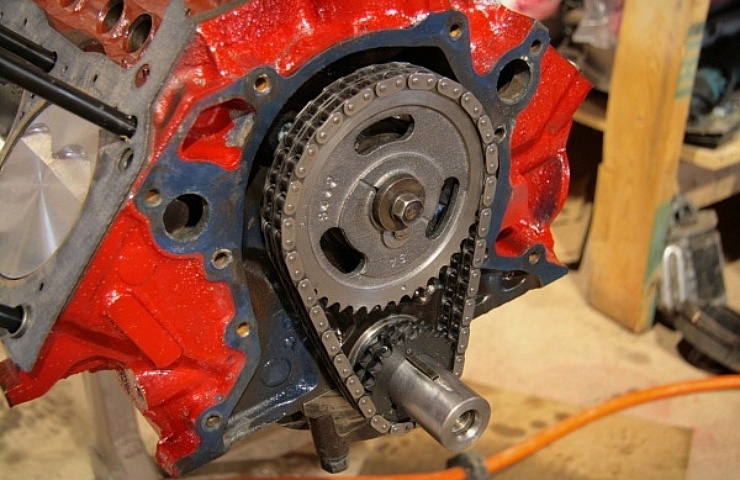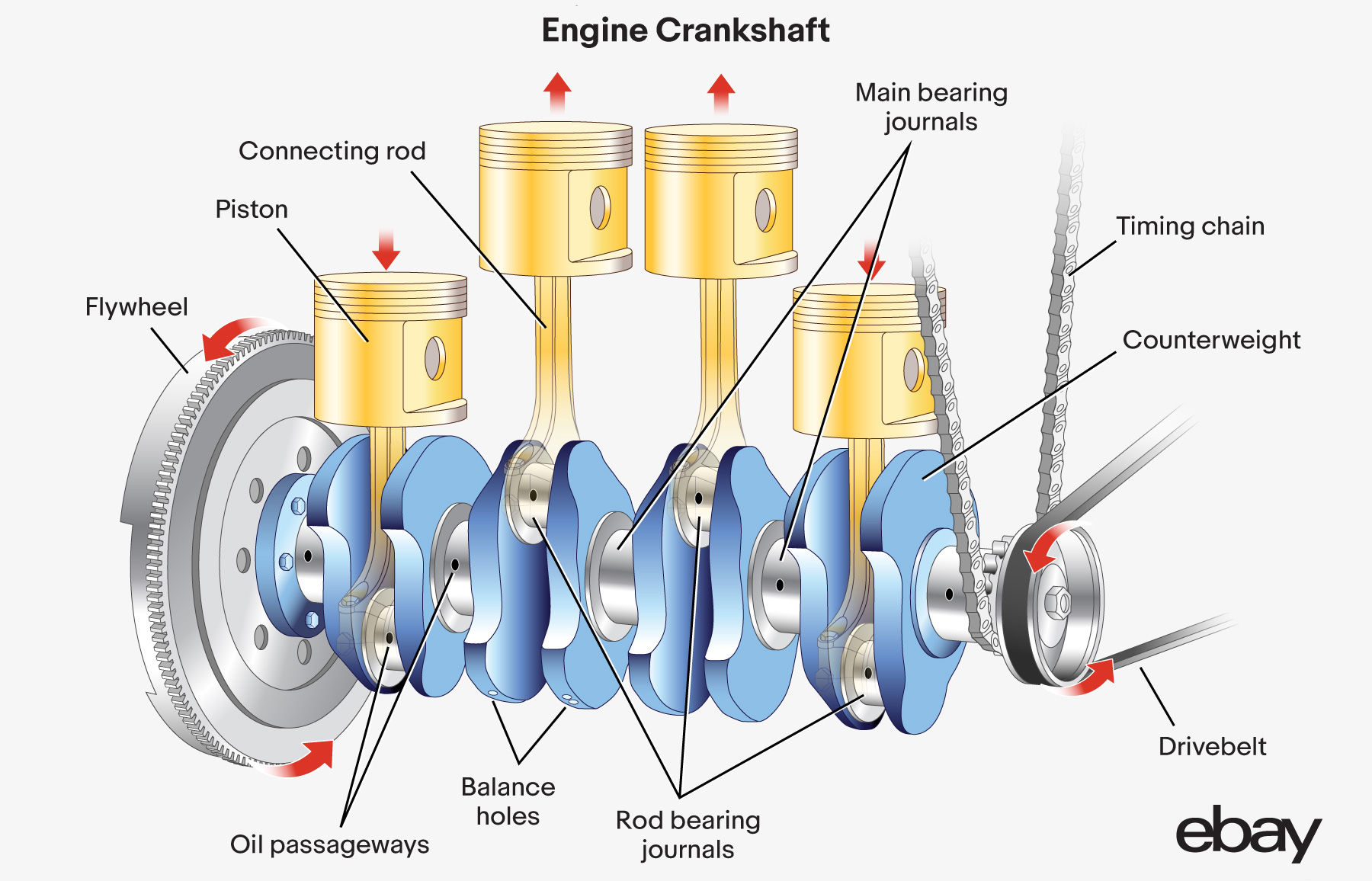Contents
The upper rotating assembly, commonly known as the valvetrain, is connected to the main rotating assembly via a timing chain or timing belt. Either way, when things go wrong in the timing, the engine will not run right.
What Is a Timing Chain?
As the name suggests, this is an actual chain made of links that connect the crankshaft to the camshaft via a set of gears that dictate the position of the two shafts, keeping them in time. The crankshaft is the heart of the engine because it moves the pistons, but the camshaft is considered the brain, as it controls the movement of the valves so that the pistons have air and fuel.
The timing chain is mounted to the front of the engine block behind a metal cover, but it is considered internal because it is lubricated by oil.
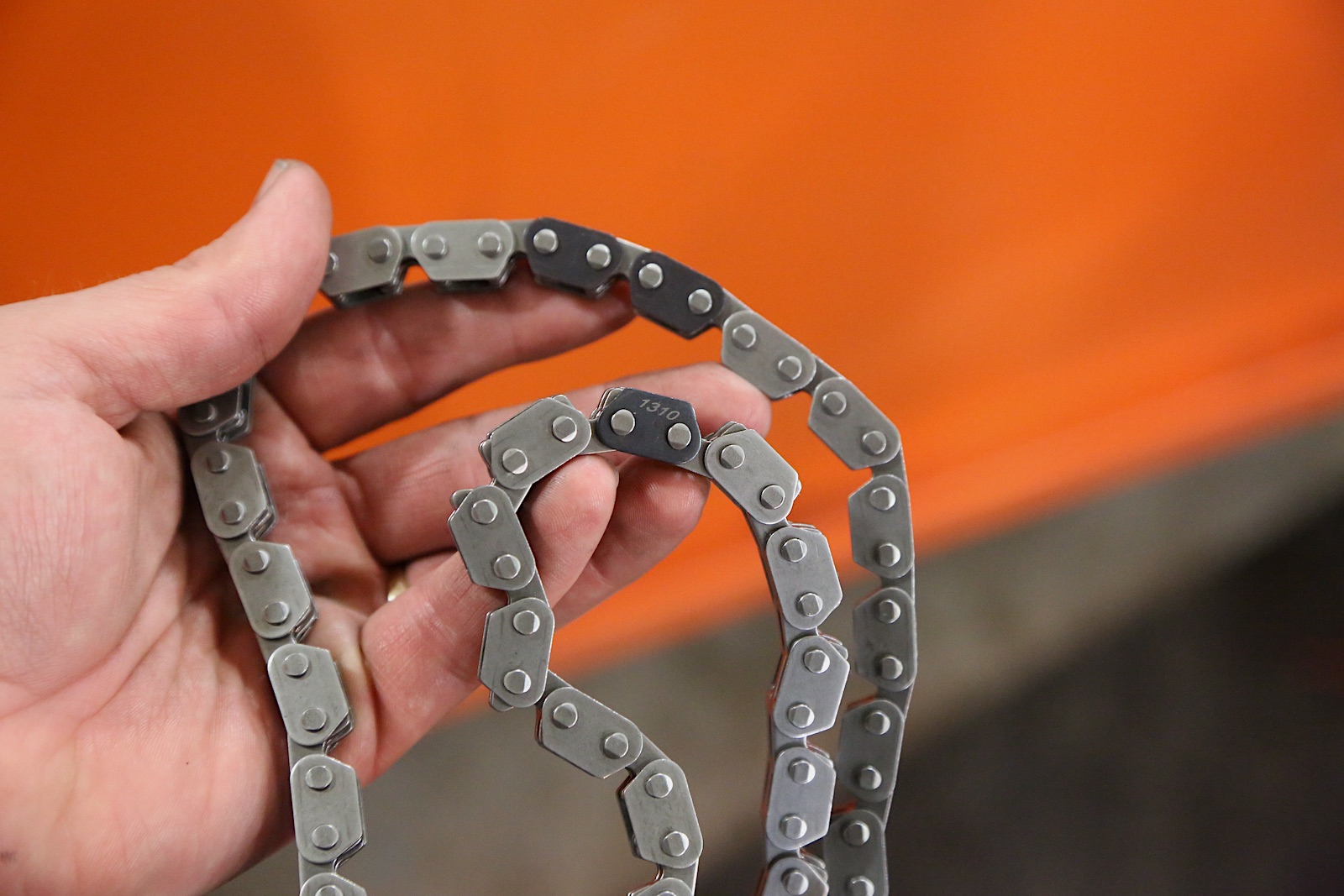
A shiny new timing chain (Photo: Jefferson Bryant)
The valve train in any engine spins at half the speed of the crankshaft. For every two crank rotations, the cam rotates once. The timing of these events is critical to the correct operation of the engine, and the timing chain controls the consistency of this timing. If your timing chain is off by just one tooth, the results can range from mediocre performance to your car not starting.
Timing chains are primarily used on single-cam pushrod engines but can be found on some overhead valve (OHV) engines. Most OHV engines use timing belts because the path length is so long that a belt is more reliable.
A timing belt is a cogged belt that drives the cams, but they don’t last nearly as long. Belts are mounted to the outside of the engine, usually covered by metal or plastic covers, and don’t require lubrication.
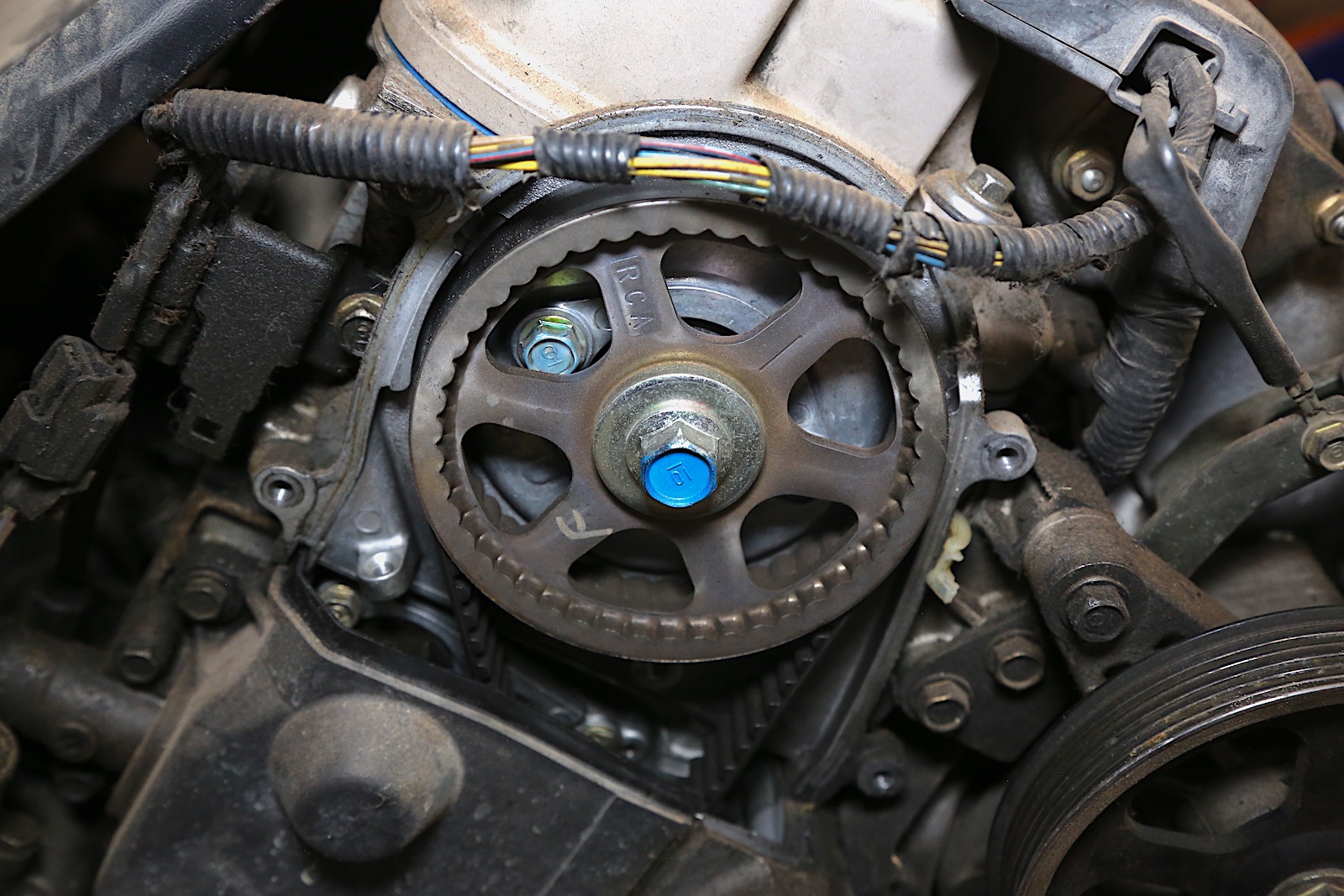
Here is a timing belt for an Acura V-6. Note the cogs. This is a key difference between belts and chains is the rubber and cord construction versus metal chain. (Photo: Jefferson Bryant)
Modern engines with variable valve timing (VVT) put a lot more stress on the timing chain due to the constant adjustments to the speed of the camshaft. Hydraulic pressure changes advance or retard the camshaft rotation minutely through a VVT gear on the camshaft. As the VVT system operates, the timing chain experiences little jerks. If your engine has VVT, consider changing your timing chain based on the factory interval.
When Should It be Replaced?
Unless your engine has a specific replacement interval, the commonly accepted mileage is between 80,000 and 100,000 miles. However, the timing chain isn’t necessarily a maintenance item and can last the engine’s life, provided you change the oil regularly and maintain the rest of the engine. Modern engines can last 300,000 miles or more with proper maintenance, and the timing chain can go that long, too.
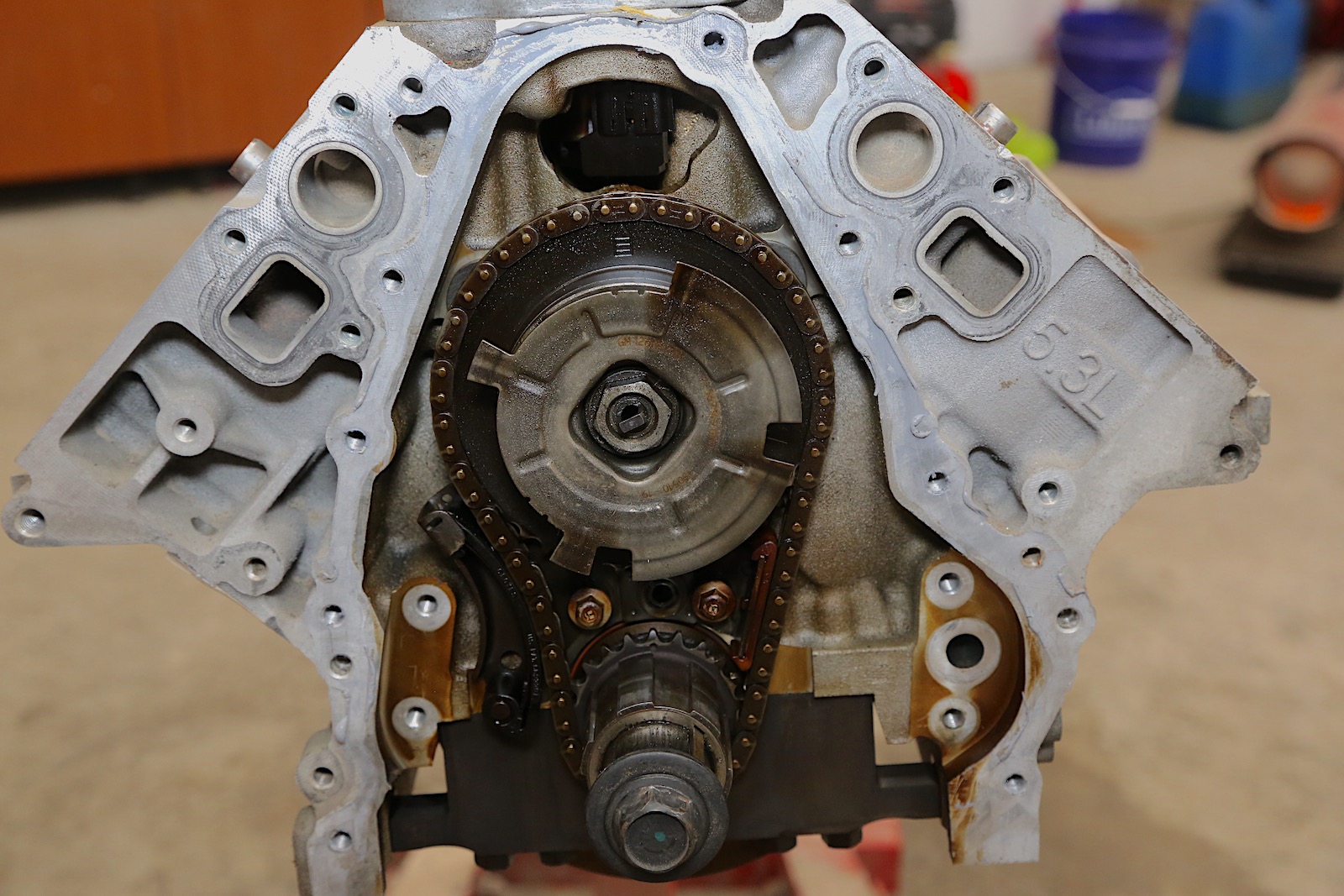
Modern engines with VVT (variable valve timing) put more stress on the timing chain because both of these functions involve adjusting the cam timing with hydraulic pressure. This example is a Chevrolet Gen V L83 5.3l V-8. (Photo: Jefferson Bryant)
Timing belts are made of rubber and string, unlike timing chains, which are made of steel. Timing belts stretch, so replacement is a good idea to extend engine life. A shorter chain lasts longer than a long chain, which tends to stretch more.
Signs of a Bad Timing Chain
Besides a chain beginning to break, it can be tough to determine if the chain is worn. Jumped timing and slapping are the most common signs of timing chain wear.
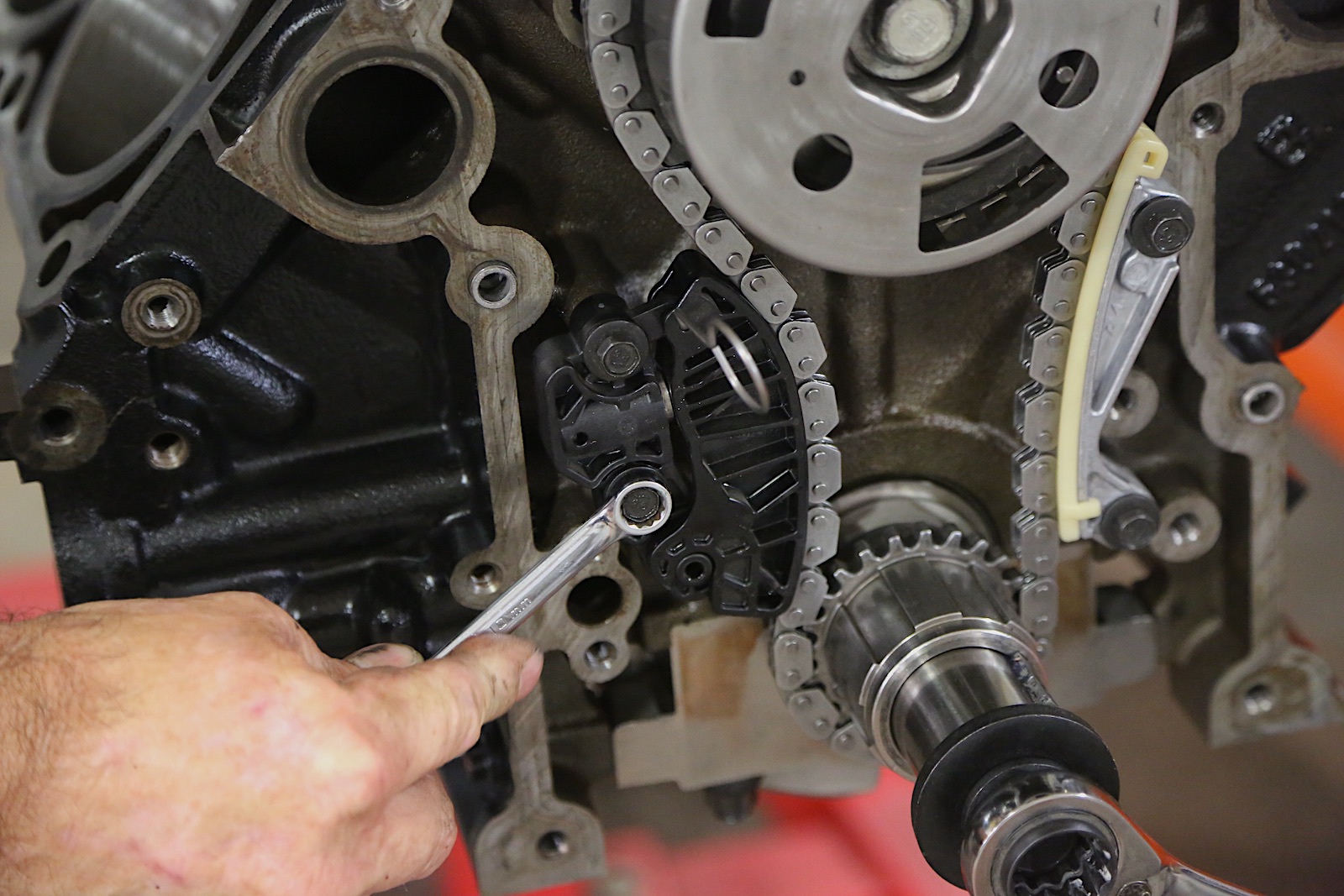
Chrysler Gen III Hemi engines use a set of links to note the timing position of the crank and cam. The tensioners were recalled for failure. The fix is nylon guides as shown here. (Photo: Jefferson Bryant)
You may hear a rattle or slapping sound from under the hood, which could indicate the chain is slapping the block or cover because it has stretched significantly and needs to be replaced. Misfiring, poor idle, and rough running could mean the chain has jumped a tooth and the timing is off. Replacement is urgent, because the chain could break at any point, and the engine could be damaged from incorrect valve timing. Metal shavings or visible pieces of chain in the oil would be another potential sign.
Engines with longer timing chains also have tensioners that can wear out. Some engines have a sensor that will set the check engine light for a loose chain, but most do not. Replacing the tensioner should accompany any timing chain replacement, and vice versa.
Replacing a Timing Chain
Here are the basic steps for replacing the timing chain:
- With the vehicle off, disconnect the negative battery terminal.
- Remove the engine’s accessory drive components as needed to access the timing chain cover.
- Remove the timing chain cover. Depending on the model, this may be secured with silicone or a gasket. Clean the cover and the mounting surface with a gasket scraper.
- Spin the engine so that timing marks line up as per the requirements for the engine. Some line up at 6 and 12 o’clock; some are 12 and 12. Verify the specific timing marks for your make and model.
- Unbolt the cam gear(s), then carefully remove them from the camshaft. DO NOT move the cam position. Remove the chain from the crank gear as well.
- Now, the crank gear will slide off the crankshaft.
- Installation is the reverse of the removal. Crank gear goes on first.
- The cam gear is installed with the chain attached to both gears (or one of the cam gears if you have overhead cams), with the timing marks aligned.
- If equipped, install new timing tensioners after replacing the timing chain.
What Happens If You Don’t Change a Worn Timing Chain?
If the chain breaks, your engine won’t start. The valves or pistons could also be severely damaged if it’s an “interference” engine, meaning the pistons can hit the valves at full extension. Even if it’s not an interference engine, a broken chain can destroy your engine if the chain links roll up on the crank or cam gear and whip around, breaking internal components.
Your engine’s timing chain is a critical piece of equipment inside the engine. Proper maintenance should keep it in good working order for many miles, but eventually, it will stretch. Pay attention to how your engine sounds under the hood, as slapping and grinding are the main signs your chain is ready for replacement. There are no additives or quick fixes for a timing chain—when it starts to go, it just goes.
Shop now for timing chains
